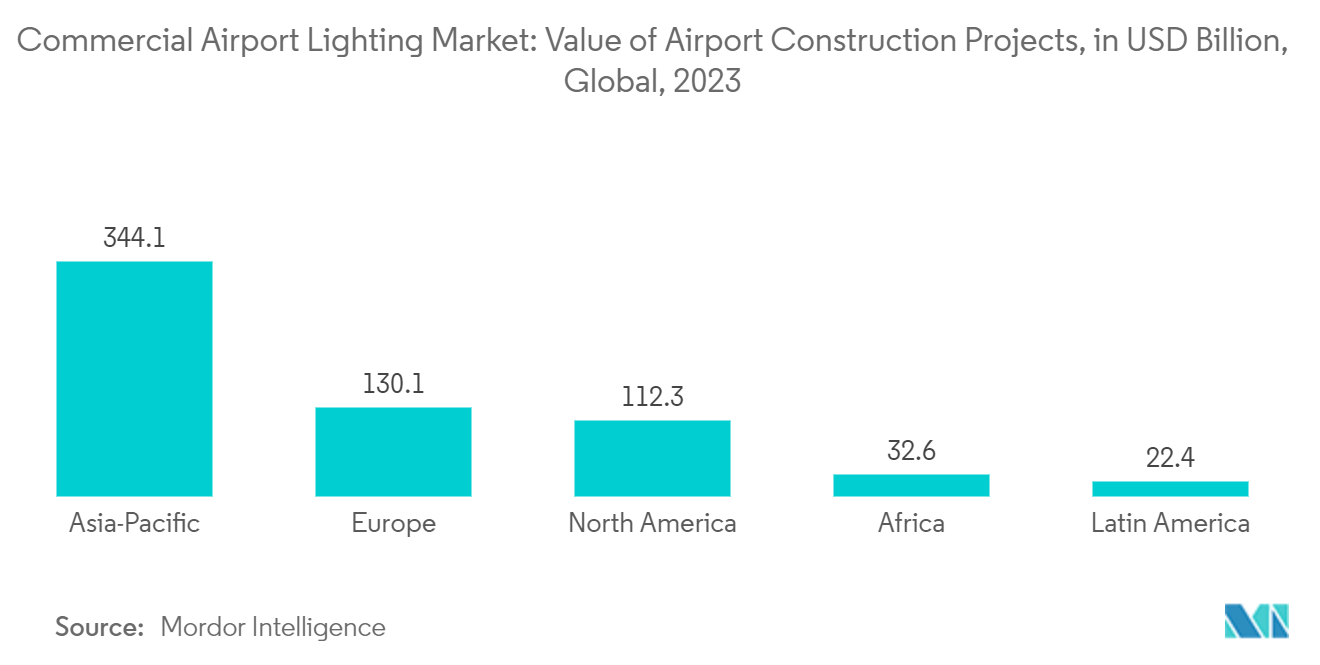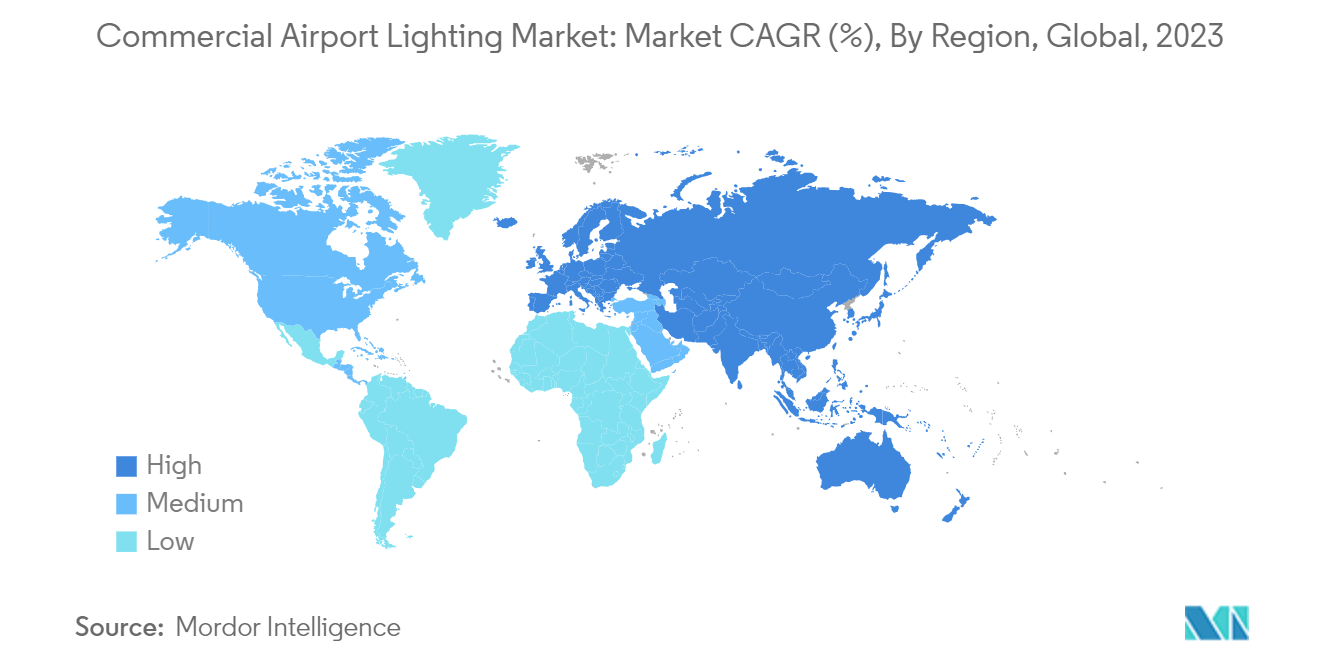Market Trends of Commercial Airport Lighting Industry
Runway Lighting Systems Projected to Show Significant Growth
- The increasing aircraft movement, in terms of landing and takeoff, is driving the need to install runway lighting systems that comply with the global standards of airport operations. Increasing investments in airport expansion/modernization projects and a rising focus on enhancing airport infrastructure are driving the demand for runway lighting systems.
- The rapid growth in passenger traffic has also improved the frequency of aircraft movement at airports. The global aircraft movement witnessed a 14.8% YoY growth in 2022 and reached around 85 million, with the top 20 airports constituting about 11.4% of aircraft traffic.
- The need to create and serve new routes encouraged the construction of new airports worldwide. It has also fostered the upgrade/modernization of existing ones to effectively cater to a larger passenger volume. The governments/aviation authorities have also awarded several contracts for runway/ airfield lighting systems to facilitate aircraft’s safe landing and takeoff even under adverse weather conditions.
- For instance, in October 2023, the Tanzanian Government inaugurated the Dodoma Airport's airfield lighting system for night landings. The Government aims to have such a system installed at all airports in the country.
- Thus, growing investments in developing new airports and increasing focus on modernizing existing airports are projected to drive the growth of the runway lighting systems segment during the forecast period.

Asia-Pacific to Experience the Fastest Growth
- The commercial airport lighting market in Asia-Pacific is expected to witness growth during the forecast period. The construction of new airports and the modernization of the existing airports are expected to generate demand for new and innovative lighting systems.
- A surge in passenger traffic in various countries like China, India, Indonesia, and Australia is expected to increase investments toward expanding their existing aircraft infrastructure and constructing new airports.
- The Indian Ministry of Civil Aviation has released the “Vision 2040” report, which states that there will be 190-200 functioning airports in India by 2040, and the operating commercial fleet size is projected to be around 2,360 aircraft by 2040. In March 2024, the Indian Government inaugurated 15 airport projects, entailing a total capital expenditure of INR 98 billion (USD 1.17 billion), including new terminal buildings at 12 airports such as Delhi, Lucknow Airport, and Pune.
- Regional airports are also replacing their existing lights with new systems to conserve energy and carbon emissions. In February 2023, Adani Group, through the EPC Contractor Larsen & Toubro, partnered with ADB SAFEGATE to utilize Airfield 4.0 technology at the Navi Mumbai International Airport, ensuring advanced future capability as it continues development on the first phase of construction scheduled for completion by the end of 2024. The airport plans to service 20 million annual passengers and features two runways and three terminals spread out in a lotus shape. Such initiatives in this region may propel the market's growth during the forecast period.


